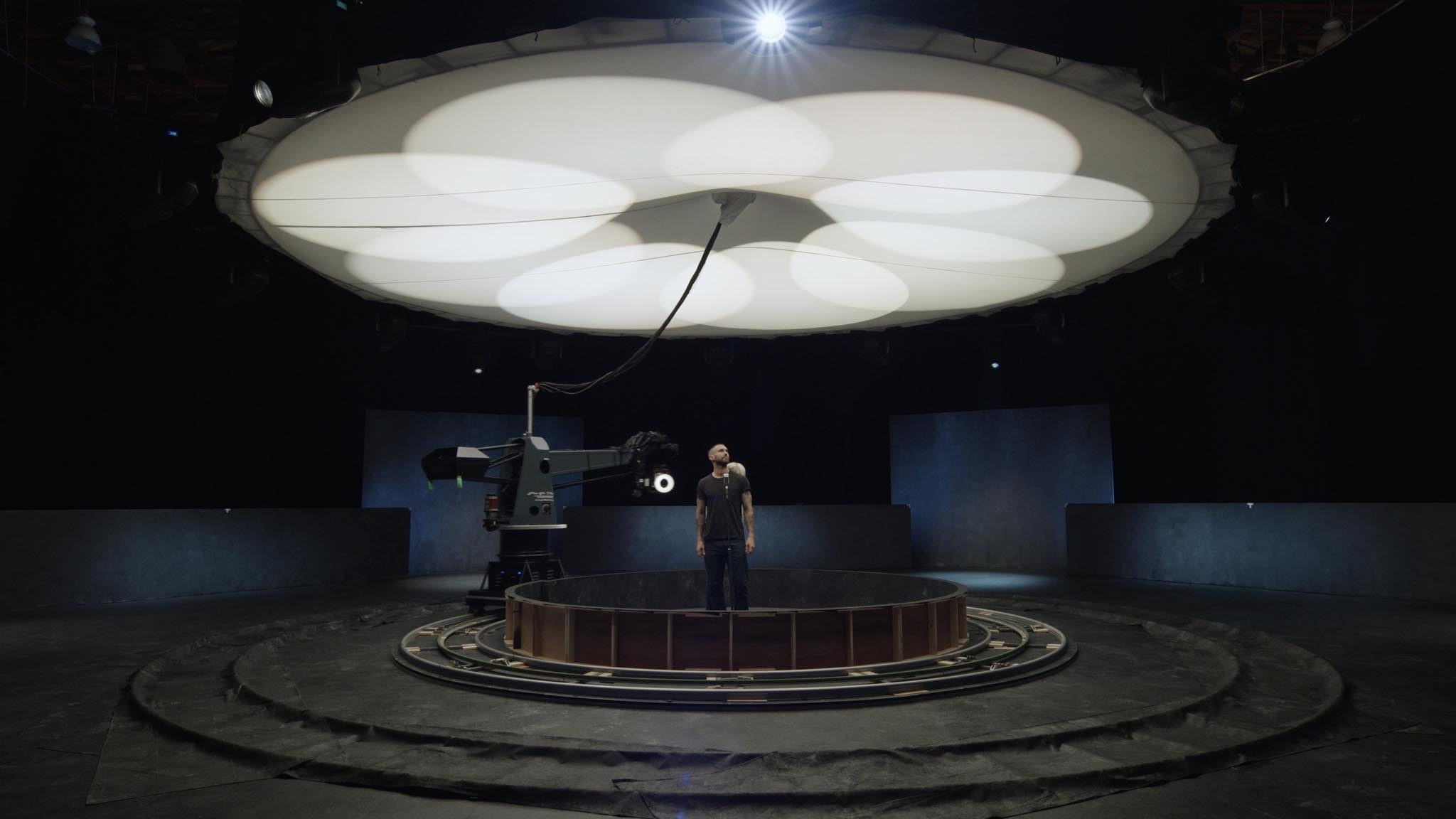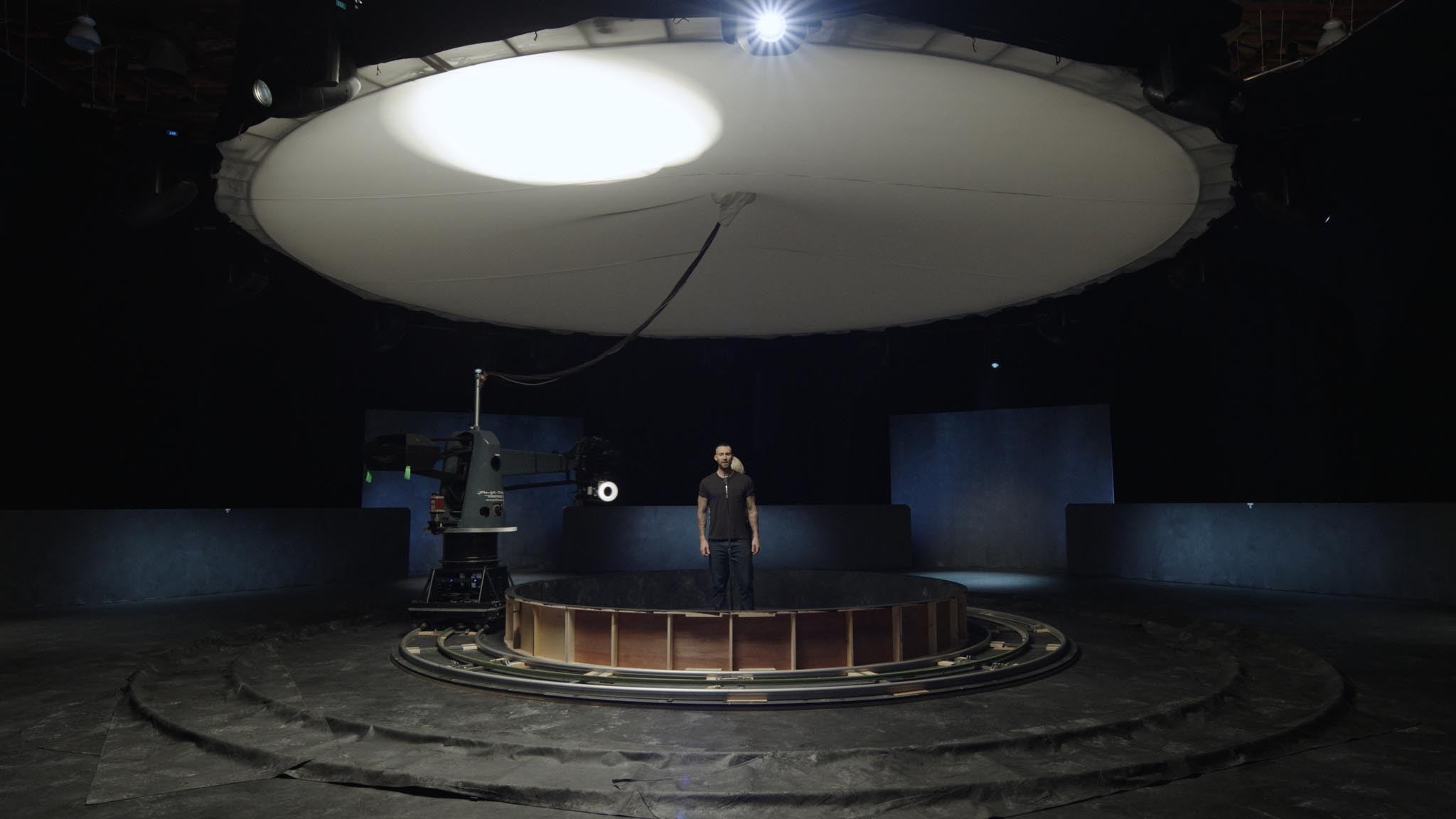06-03-2019 - Case Study
Claudio Miranda ASC Shoots Maroon 5 and Cardi B's GIRLS LIKE YOU on VENICE
By: Jon Fauer
By Jon Fauer
Claudio Miranda, ASC talks about “the making of” Maroon 5 and Cardi B’s GIRLS LIKE YOU music video on which he was the cinematographer—using a Sony VENICE camera package supplied by Keslow Camera, motion control, programmed lighting, 250 takes, manual focus and more.
Entertainment Weekly wrote when the video first came out, “there have been more than 48 million views on YouTube (now more than 2.2 billion), thanks in large part to the pantheon of goddesses who pop up throughout…icons like Jennifer Lopez, Ellen DeGeneres, Gal Gadot, and Mary J. Blige… comedians Phoebe Robinson and Lilly Singh… activists Angy Rivera and Jackie Fielder…athletes Chloe Kim and Alex Morgan…and the heroic gymnast who inspired so many to speak their own truths: Aly Raisman. At a time when the world is primed for strong female role models, the video offers a who’s who of female empowerment.”
JON FAUER
Claudio, please explain the concept.
CLAUDIO MIRANDA
The way Director David Dobkin conceived the shoot was to have actors coming in at different times but to make it feel like everyone was there at the same time. So, we decided to design it as a motion control round track shot.
We knew we had to get all these actors at different times, because they would never be available on the same day. It turned into a five-day non-consecutive shoot because of talent schedules. We plotted where everyone would go so they could interact with each other and the lead singer, Adam Levine. That was the theme. We shot Maroon 5 together as a band, Adam by himself, then over the following days passes with Adam interacting with talent and finally the talent by themselves. Motion control (MoCo) was really the only viable option.
How did you hold deep focus?
To hold the MoCo two shots, we used the Sony VENICE camera’s dual base ISO of 2500. I had a beta firmware of version 2 at the time. And I said, “Let’s give it a go.” When we looked at the footage, we realized that this was something that could really work well. The added depth of field definitely helped get everyone into focus—close up and far away. But we still had to manually pull focus on every take.
What was your aperture?
A little more than T5.6
And you recorded to X-OCN?
X-OCN ST.
And what lens?
It was a Master Prime.
Super 35?
Yes, for the greater depth of field. That’s another nice thing about VENICE: we could “window” the sensor for 16:9 aspect ratio in Super35 4K. As for viewing, we monitored the whole job in 4K on a Sony x300.

Who supplied the Motion Control rig for the circular move?
Pacific Motion Control was the company that supplied the motion control “dolly” rig, head, equipment and track. Craig Shumard is the owner/motion control tech. Once programmed, it became pretty simple for the talent. They just did 2 or 3 takes, because no one really had that much time.
I guess focus was pretty easy once your AC had it centered on the subject?
My assistant was Dan Ming and no, it was not easy. Every pass was manually focused. Some of the actresses played to the lens. Others really went a little bit crazy—gawking into the lens or really slamming up to the camera and then quickly moving away. We only had the talent for a short time. That was a reason why it was beneficial for the 2500 ASA and extra depth of field. We had to pull focus for all 250 takes—the distance ranged from 18 feet to as close as 20 inches, depending on what the talent did.
Where was the focus puller hiding?
Dan Ming added by email: We were stuck behind a solid so we used the Light Ranger 2. Its green bars on the monitor gave me a feel for the movement. We did that song 250 times and focus was a little different every time.
How were some of the people removed in post when there was an overlap?
There was a bunch of roto to remove things and individualize each actress.
And the lighting?
I had a lighting rig built. I didn’t want to front light everyone all the time. The lighting rig let us change from front to backlight, and it also helped with the transitions as each actress entered or exited frame. The lights were programmed as part of the motion control with dimming, fading and moving. Everything—lighting, dimmer board and camera movement—was being driven off time code.
Because it was not shot on consecutive days, because of talent availability, the hard part was that we actually had to tear the set down and dismantle the rig each time, and then rebuild it all for another day when someone else could come in.
What kind of lighting fixtures were in your overhead rig?
We had 8 movers — moving lights. They panned across the overhead muslin. Imagine a 40 foot diameter muslin over the top of the set, centered on the nodal point of our circular move. I had the 8 movers pan around the muslin, so it would be front, back or side light. Sometimes the light was confined to a certain area, like a single 4-foot or 6-foot circle.
Like a car shoot, a giant Fisher light?
The lights were rigged on top and coming from overhead through the muslin. I wasn’t bouncing. The key light would sometimes go counter to the MoCo move at times. At other times, very briefly, it would open up to 8 big circles that looked like a flower with 8 petals. And then the lights would concentrate into a sourcier back or front light. It worked in a kind of cool, slightly complicated way of doing things.
It looked more interesting than many 360 degree circular shots.
I had a little ring light as well that we 3D-printed to slide on a Master Prime.. Sometimes I would operate it by hand depending on how close the talent was coming up to camera. And I could dial the ring light up or down as an extra fill, or anti-fill if we didn’t want to reveal too much.

How was the Motion Control programmed?
I operated the initial move and they recorded it. That was the basis of the camera movement throughout the whole 4 ½ minutes for everything except Cardi B, which was kind of her own thing. What was challenging was when we had to break down the MoCo rig and set it up again and match the move when we had down days between talent availability.
The shot towards the end where all the ladies are in the same shot, and you’re still circling around, were they all isolated and combined in post?
That’s right, that’s why everything is Motion Control.
But they had to do a lot of roto removal?
They had to do a lot of roto around the people. There was no blue screen. It was a regular background.
The VENICE has a nice look at the high ISO rating.
That was pretty surprisingly for me at 2500 ISO: no noise, and pretty clean. Even the people who did the roto had no issues at the 2500. It was funny because I wasn’t going to shoot 2500. I thought T2.8 at 500 ISO would be fine. I usually like wide open in general, with a shallow depth of field, and I don’t usually like shooting closed down. But it made sense for this piece. It was kind of a last minute decision. Dan said it would be really handy to have more stop, since talent movement was unpredictable. At first, I said no. And then we dialed in the 2500 base ISO and tried it at a “heavy” T5.6 and it looked great.
Explain the math again?
The VENICE camera has a native ISO of 500. I lit the set to a T2.8 at 500 ISO, as I would normally do. To carry the extra depth of field, I switched to the higher base ISO of 2500. That gave me a bit more than an additional 2 stops: a heavy T5.6.
To help carry the background?
For this piece, I didn’t feel that shallow depth of field was helpful. We had band members in the background and we had to carry focus as we circled the talent. We talked about shooting full frame, but that was counterintuitive to the depth of field argument.
How does the higher base 2500 ISO manage to look so good, with so little noise?
Well, the camera is native 500, but when you go to 2500 ISO it’s a different mode entirely.
It’s not like you add gain on the camera. It is amazingly clean. So, it’s super handy that you can flip the VENICE into 2500 ISO mode if you need it for anything, and then you have the 8 stops of ND filters in-camera if you ever need them at the push of a button.
Photos showing movers lighting through overhead muslin and circular motion control rig courtesy of Claudio Miranda, ASC. Click on first image to begin slideshow.





